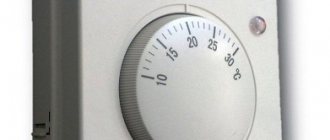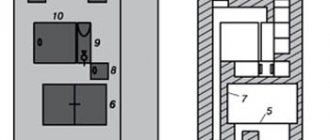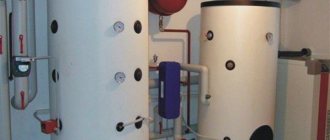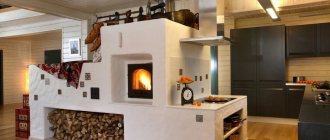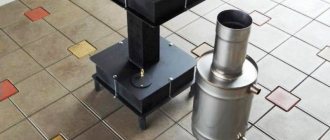/Accessories and decor/Decoration/
When an unsightly heating radiator spoils the interior, there are several ways to solve the problem: replace it with a designer or in-floor model, or simply cover it with a screen/box. The latter method provides several advantages:
- A screen or box not only hides a bulky structure, but often decorates the room.
- The screen/box can be used to build an additional console, a shelf for decoration, a bench, a rack, or a desktop.
- A closed battery is safer for children - there is no risk of burns or accidental impacts. However, one can argue with this argument, because it is in the children's room that heat loss is least needed.
In a children's room, the radiator should be covered with a nice grille with a large number of holes, for example, carved like in this photo
- If the house is too hot and dry, then closing the radiator will help create a comfortable microclimate for household members, their pets and plants.
- The screen prevents dust from settling in the inside of the radiator and thus simplifies cleaning.
There are also disadvantages:
- The heat transfer of a closed battery decreases on average by 10-15% or more (depending on the degree of closure);
- Screens and boxes often make it difficult to service radiators, and sometimes even block access to them.
- Often, improperly closed batteries lead to fogging of windows, and then to the appearance of harmful mold on slopes and walls.
- The screen or box, at least a little, “eats up” the space around the radiator. After all, any elements should be installed at a distance of 5-10 cm from the battery.
- Battery fencing requires additional expense and hassle.
Later in the article we will tell you how to close radiators without compromising the heat in the house and show with an example of 70 photos how to do this beautifully.
Is it worth hiding batteries behind a plasterboard structure?
In his home, the owner himself decides how to hide the radiators. Including using a box. That is, it CAN be done, and there are no problems from the legislative side either.
Only the owner of the apartment will feel the disadvantages of installing the box, and here’s why:
- convection of air flows will decrease, due to which heat transfer to the room will suffer - the room will warm up a little worse;
- If heating repairs are needed, the box will need to be dismantled - extra work and expense.
In any case, no one completely covers the battery with drywall. Only the side parts are masked. A box is constructed from the sheets, which forms a niche for the heating device. Behind this structure there is a pipe connection.
It is worth remembering that when installing the box it is important to follow two basic rules:
- Leave a small distance between the side parts of the radiator and the walls of the box. The drywall should not come into close contact with the battery. These gaps will maintain optimal air convection.
- Make the niche dimensions convenient to easily access the control units.
Don't forget to also check the radiators for leaks before masking them with a plasterboard box.
Effect on thermal output
Ideally, the screen should not affect the heat exchange between the battery and air. However, any design impedes air circulation and partially blocks the paths of thermal radiation.
Changes in the thermal power of the radiator depending on the placement and presence of a screen.
It is important to meet the following conditions:
- leave a ventilation gap of at least 60 mm from the floor across the entire width of the radiator;
- provide a hole at the top for the exit of heated air;
- maintain a distance from the sections to the front wall of the screen of at least 50 mm;
- choose a screen with a front wall, at least 50% of the area of which is filled with through holes;
- give preference to easily removable screens that can be easily dismantled on particularly cold days to improve heat transfer and also for cleaning.
It is advisable to paint the inner surface of metal screens black - this will contribute to its rapid heating and increased heat transfer by emitting infrared waves.
Pros and cons of battery cover material
The plasterboard niche for radiators looks attractive. The material is very easy to work with, so you can make almost any structure: simple rectangular, interesting shaped, etc. Plus, you mask the pipe connections. Only the front part of the battery will be visible, although it can be covered with a screen.
As for the downsides, there are some too:
- if the heating radiators leak, the drywall will be hopelessly damaged, even if it is moisture resistant;
- behind the box it will not be possible to notice the first signs of a leak, which makes it more difficult to prevent an emergency;
- during scheduled heating repairs, the box will need to be removed;
- After installing the structure, the temperature in the room will drop by several degrees.
Whether it is worth making such sacrifices is up to the owner to decide. Installation of a plasterboard box is quite possible, and there are no restrictions for this.
Why do we need screens for heating radiators?
The screen installed on the convector performs several functions:
- protective;
- decorative;
- heat-conducting;
- hygienic.
The buyer's priorities may be placed in a different order, but each item is important.
Defense tasks
The battery grill protects both the device itself and the occupants of the home:
- You can hit the edges of the sections, shut-off valves and thermostat;
- large dogs can destroy pipes, causing home flooding;
- the convector heats up to high temperatures, which can cause burns;
- The rescue service reports frequent cases where a child's arm or leg gets stuck between the sections.
When furniture is moved or objects fall, impacts sometimes occur on the heat exchanger, which can lead to damage to the appearance or cracking of sections.
How to actually choose the cheapest heating radiators on the market
Decorative functions
Unsightly radiators can be covered with curtains, but this will reduce heating efficiency.
By choosing the right screen, you can emphasize the stylistic design of your home by hiding the radiator, pipes, shut-off and control valves.
The screen is an assistant in the fight against dirt
There are tools that allow you to clean the radiator from dust in hard-to-reach places, but even with their help it is impossible to remove dust from all areas.
The heating radiator works like a convector - air flows rise from the floor along the edges of the sections. At the same time, dust and pet hair settle on hard-to-reach surfaces of the battery, which are difficult to remove due to the structure of the sections.
The screens partially “filter” air flows, and it is not difficult to remove dust from their front wall.
We make markings and drawings
- If you plan to build a floating structure, do the following:
- Measure the required distance from the bottom of the radiator and use a level to draw a straight line. This will be the bottom part of the future box.
- Draw the side lines using a construction angle. Do not forget to leave a distance between the edge of the box and the radiator (15 centimeters is enough).
- Connect the upper edges of the perpendicular lines by level.
- Review the direct lines.
For a structure standing on the floor, make the markings from the top of the heating radiator.
Screen manufacturing options
All types of screens can be classified according to several criteria:
- material of manufacture;
- installation method: built-in, wall-mounted and attached;
- design: with or without a lid, flat or boxes, etc.
The type and appearance are chosen based on the criteria of functionality, appearance and price.
Metal
Steel screens have such positive qualities as:
- variety of shapes and colors;
- unlimited service life;
- minimal thermal deformation and color fastness;
- good thermal conductivity, allowing heated screens to re-radiate heat rays;
- strength;
- ease of care.
For production use:
- solid steel sheets with holes for air circulation,
- perforated steel with a geometric or arbitrary pattern;
- perforated mesh or welded mesh;
- stainless steel;
- Forged Products.
The variety of shapes and designs will allow you to choose a model for any interior: from loft to high-tech.
Wooden
Wooden screens are typical for interiors designed in a classic style. The products are distinguished by their aesthetic appearance, reliability and durability. At the same time, natural wood conducts heat poorly, reducing the radiant component in heating. As a rule, such products are massive, with a minimum of holes, which makes convection difficult.
Products made from valuable wood species are not cheap, so they have gained little popularity. Inexpensive pine products are functional, but their ascetic appearance limits the scope of use.
Plastic
Plastic screens in the form of blinds are often used for installation in utility rooms, bathrooms, and public buildings.
The main advantages of the models:
- cheapness;
- variety of sizes and colors;
- Hygienic – the products are easy to wash after removing them from the frame.
If necessary, it is easy to dismantle.
In addition to the economy segment, products made from high-quality plastic can be of a non-standard type, their price often exceeds tens of thousands of rubles.
Glass
Glass screens look light and sophisticated. The material transmits up to 95% of radiant energy, which contributes to good heating of rooms. They are painted and decorated with colored films or designs.
There are restrictions on the use of glass. For example, in housing where there are children or large dogs, it is not advisable to install fragile screens. The glass must be tempered.
MDF and HDF boxes
Medium-density (MDF) and high-density (HDF, UHDF) fiberboards are more often used for the manufacture of box screens.
The materials are easy to process, the front panels are openwork and seem light. Such products are found in trade under the name quartek.
When purchasing, you should check the safety certificates - cheap products are more likely made from materials with a high content of formaldehyde, which is unacceptable when installed in children's and bedrooms.
Drywall
Drywall sheets are used to make a frame, the openings in which are filled with other material: plastic gratings, metal panels, MDF, HDF.
The screen itself is not made from gypsum plasterboard, since in case of leaks the structure will have to be completely destroyed.
Bamboo and rattan
Completely natural materials are safe, have an unusual appearance, suitable for oriental design style.
It is better to order inexpensive products from Chinese online stores.
Assembling the frame
Take profiles measuring 60x28 and 27x28. First, secure the elements that will not be on the wall:
- Place the profile against the line on the wall.
- Secure the profiles with dowels in increments of 20 cm.
- Check everything with a level.
Then install the second level of the frame. Divide the profile into sections of the required length. Then cut the edges 5 cm along the fold of the profile.
It turns out that the edges of the profile product are cut off, and the middle cut part is bent to the side. At the exit, a structure with an angle of 90° is formed.
Next, secure the vertical products to the front side of the structure. This way you will have a finished frame for drywall.
Prices for ready-made screens for radiators
For most apartments, ready-made screens are already available for sale, which do not require adjustment, since the apartments have standard heating solutions.
The approximate cost of popular screens of different designs is collected in the table.
| Screen appearance | Material | Installation method | Price per m2, rub. |
| steel, perforated | mounted | from 500 | |
| HDF | recessed | from 600 | |
| HDF, natural wood | stationary | from 10 000 | |
| Strained glass | mounted | from 12 000 |
Large retail enterprises sell a small range of products designed for the mass consumer. It is usually limited to hanging steel products, plastic “blinds”-type grilles and “quartec” blanks.
How to embed a grille into a window sill
Installing a ventilation grille in a window sill is a job that every tenant can do on their own, you just need to have experience working with plumbing and hand power tools, as well as have free time and the desire to work with your own hands.
What tools will you need?
To perform the work you will need tools such as:
- tape measure and construction square;
- pencil or marker;
- electric jigsaw or angle grinder (“grinder”);
- electric drill or screwdriver;
- a set of drills of various diameters.
In addition, you may need glue for plastic and self-tapping screws designed for attaching certain types of ventilation grilles, depending on their design and installation method.
Aluminum model GTV series 60x480 mm
Step-by-step process of installation work
The algorithm for installing a ventilation grille in a window sill is as follows:
IllustrationDescription of action
| Markings are made on the surface of the window sill board in accordance with the size and number of products used. |
| In the places where the corners are marked, holes are drilled using an electric drill (screwdriver). |
| Between the drilled holes, using a grinder or an electric jigsaw, the surface of the window sill is sawed through. |
| The cut fragment is removed, and the cut areas are cleaned. |
| The grille is installed in the prepared hole and, if necessary, secured with glue or self-tapping screws. |
As already written above, installing a ventilation grill is quite simple, as evidenced by this work algorithm.
Summarize
Such elements are a fairly convenient way to get rid of dampness and fungus on slopes and double-glazed window frames. And the fact that the cost of plastic products is low, and installation is quite simple, only adds confidence in the necessity or simply profitability of their installation.
Sources
- https://ventihome.ru/elementy/reshetki/ventilyacionnaya-reshetka-v-podokonnik-konvekcionnaya-dlya-batarey.html
- https://HomeMyHome.ru/ventilyacionnye-reshjotki-dlya-podokonnikov.html
- https://okna-comfort.ru/ventilyatsia/reshetki
- https://oventilyacii.ru/otoplenie/ventilyatsionnye-reshetki-dlya-batarej.html
- https://seti.guru/ventilyatsionnyie-reshyotki-dlya-podokonnikov
- https://stroy-podskazka.ru/furnitura/podokonniki/ventilyacionnaya-reshetka/
How do you like the article?
Sergey Vladimirovich
Ask a Question
False fireplace - master class
This option is suitable for masking a radiator located in the center of the room. Making a fireplace is as follows:
- You need to prepare a furniture panel, 1 cm thick plywood, bars of the required size, and a wooden layout.
- You should create an approximate layout of the fireplace that covers the radiator. It should be a special square with a window in the center. The design of the structure depends on the preferences of the performer.
- The box is fixed on the wall. Shelves on the fireplace, pre-made from furniture board, are screwed on. The entire structure can be decorated with special polyurethane skirting boards.
- We go through the joints with self-tapping screws with putty. We sand off the excess and paint the surface of the fireplace with acrylic paint.
You can install a lamp in the firebox that will serve as an imitation of fire. If desired, you can install a garden trellis on top of the niche. The battery should be covered with imitation stone.
✔ Optimize your family budget
Have you made a renovation, but the screen doesn’t suit the updated environment at all? It's time to buy a new model: changing designs at the first desire allows them to be affordable.
Why are our prices so low?
- We ourselves produce screens for batteries, the production of which has been developing since 1995.
- We do not have the markups that competitors have during transportation and wholesale and retail activities.
We offer you to save money by purchasing models with a high quality guarantee.
Custom screens
For non-standard products, people turn to specialized workshops or private craftsmen.
There is no uniform pricing policy in this segment, and in each case “market” relations arise between buyer and seller. The former try to sell at a higher price, provide on-site measurements and designer services, which can significantly increase the price. The final cost is affected by screen size, material and manufacturing complexity, as well as the region.
It is necessary in each individual case to study the local market, prices for similar serial models in online stores and choose based on the data obtained.
Heat transfer from heating radiators Comparison of indicators and calculation methods
Decoupage - step-by-step master class
It will help give the radiator a certain chic. Decoupage involves selecting drawings and then gluing them onto the surface to be restored. The resulting image is fixed with varnish. Today in stores you can buy special multi-layer napkins with a pattern. Step-by-step master class:
- The battery is cleaned using detergents. Areas with peeling paint are cleaned with sandpaper. The radiator is coated with paint.
- You need to start applying the drawing after the coloring composition has completely dried.
- Unroll the prepared napkins and cut out the required fragments. Excess layers of paper are completely removed. The image is coated with PVA glue and applied to the radiator sections. Gently press the napkin onto the battery. Air bubbles are removed. After the layer of paper has dried, you can complete the missing elements with your own hands.
- The completely dry image is covered with two layers of varnish.
DIY painting ideas
Updating the radiator decor is carried out in compliance with the interior style. Designs painted in the same color as the walls look impressive. With proper design, you can divert attention from the shortcomings of the interior. As for painting ideas, multi-colored sections are used, giving the radiator a piano look, and applying a modular pattern. The main thing is that the type of coloring fits perfectly into the overall concept of the room. To paint a radiator “to look like a piano,” you need to think through everything so that the resulting pattern resembles the keys of a popular musical instrument. You will need two colors of paint: black, white.
✔ Emphasize the thoughtfulness of the interior
All products are coated with high-quality paint that is resistant to heat and has a wide palette of colors according to the RAL catalog. A variety of design ideas allows you to choose something that will harmoniously fit into the decor. Thus, metal models in popular beige or white colors will create a feeling of cleanliness, emphasizing the chosen style of the room.
Screens with perforation or art design style will transform even very old batteries in an instant, completely covering them. All you have to do is save on using expensive accessories and replacing the radiators themselves.
How to choose a window sill grille
The choice of modern convection grilles is quite wide: a window sill grill can look aesthetically attractive and have many types of designs and colors. This is a modern piece of furniture that can significantly decorate it. Products can be classified according to the following characteristics:
- material;
- color;
- design features;
- form;
- size;
- installation features.
Currently, gratings of various materials are produced
- wood is the least common option, which costs more than plastic and aluminum, and is more demanding to maintain
- aluminum is the best option: not susceptible to UV radiation, and not too expensive.
- steel
- plastic is the cheapest, but in white it fades in the sun and changes color, and breaks quickly
Steel gratings are considered to be the most durable products, but they also have the heaviest weight and, of course, high cost. Wooden grilles will look a little cheaper, but more aesthetically pleasing and environmentally friendly. They will not spoil the interior of the room with their appearance, but will require special care.
Some of the most affordable ventilation grilles in terms of price will be plastic and aluminum products. But over time, plastic can warp and turn yellow, and aluminum materials withstand sunlight and humidity better, but their cost is slightly higher than that of plastic products.
We recommend: Design of a circulation pump for heating: how it works, how it works in the system, principle of operation, where it should work, design
Therefore, we advise you to opt for aluminum grilles.
By the way, for those who plan to put something on the windowsill, it is not recommended to choose grill models with holes that are too large. In this case, small things may fall through them, and debris will accumulate under the batteries.
If the window sill board is not used in any way, you can choose ventilation grilles with a large open cross-section (large size of the notches) - up to 0.9. This way, more air will flow through the holes, which means there will be less chance of condensation forming.
The closer the ventilation grille is located to the windows, the better. With wide window sills, the grille should be placed directly above the radiators. To determine what the parameters should be, you need to know the dimensions of the battery. If in the upper section the battery has 800 by 100 mm, then the openings for the grill itself must be made the same (no less). Therefore, the standard sizes of gratings produced by the manufacturer are: 800x80, 600x100, 480x80 and 800x80.
In terms of their throughput, convection grilles for window sills have different effective cross-sectional sizes (the sum of the areas of the holes in the grille for air passage is called the open cross-section of the grille). For convection grilles it ranges from 0.42 to 0.60 l/s, and this is quite enough for heated rooms.
There is also a type of slatted grille - they can be adjusted and slightly rotated towards the window. This helps to further protect the installed windows from condensation and freezing.

